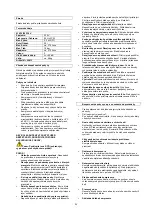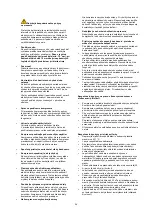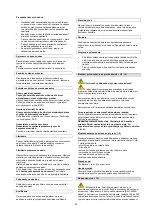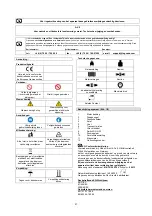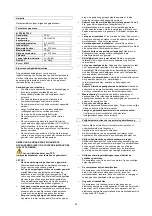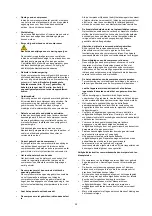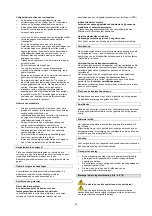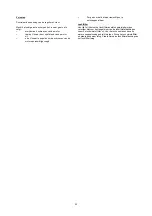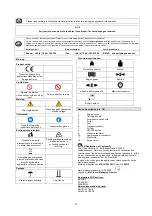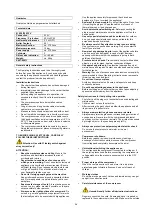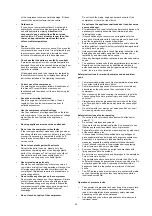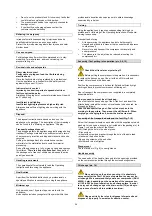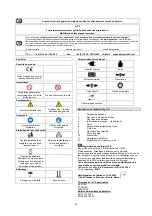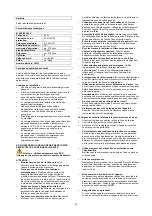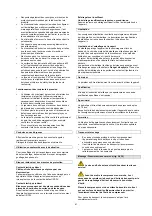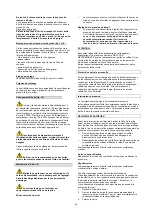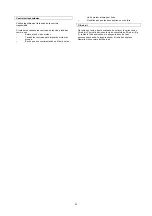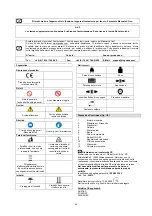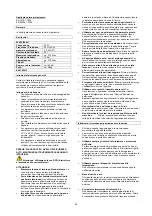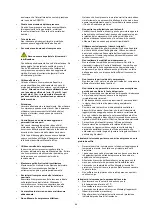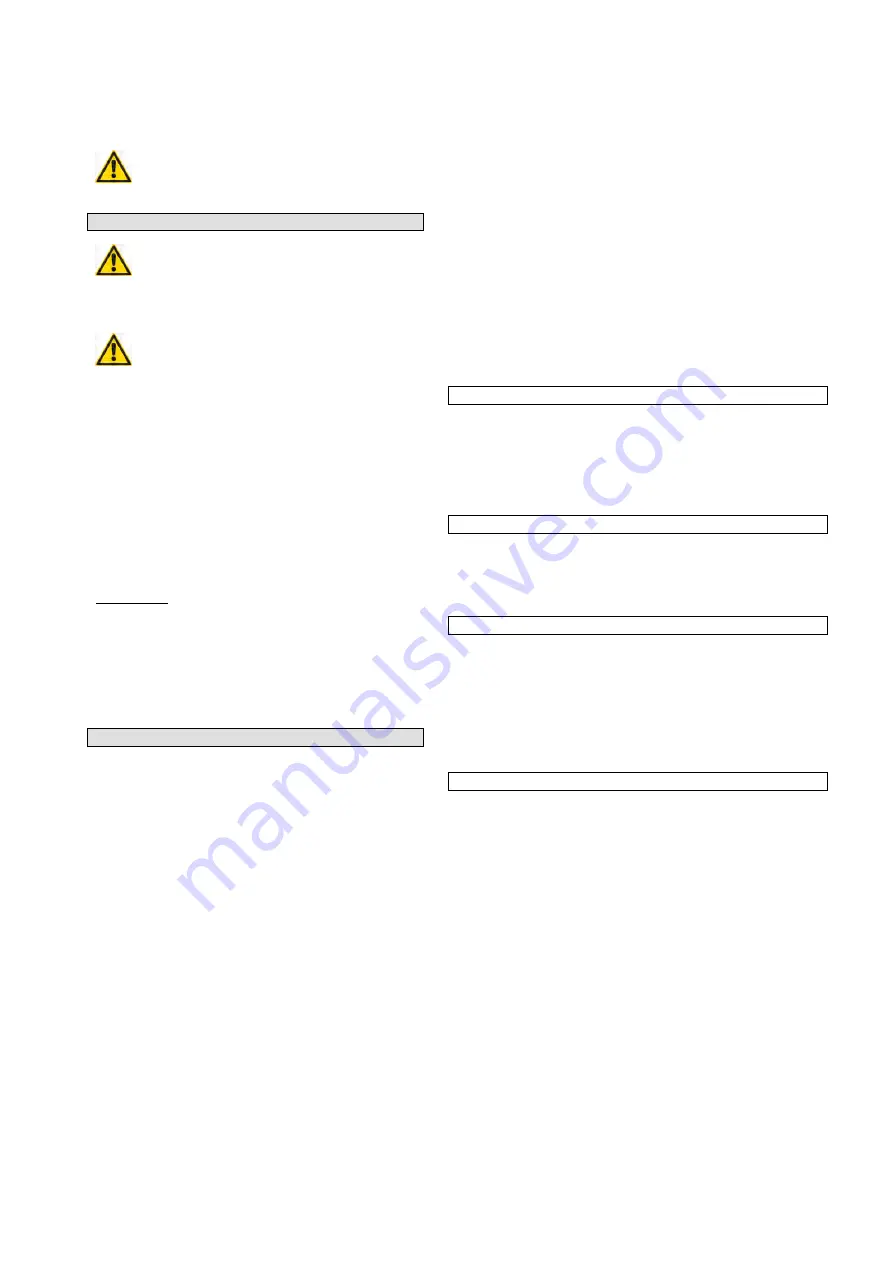
Unscrew the drain screw is now firmly back on and fill
oil up to the mark on the dipstick
In winter we recommend a lubricity oils to start
during the cold season to help!
Handling (pic. 1,2)
Turn the compressor never about the power,
otherwise no discharge of the unit is done. Without
discharge, the electric motor through the back pressure
damage!
The plug needs to be pulled out of socket before
each adjusting or maintenance of the compressor.
Switching on or off
•
The compressor can be switched on by pulling the
switching button and switched off by pushing the
button.
Working pressure control
•
The working pressure can easily be adjusted, turn the
rotary knob
in the + direction
, by this
the working
pressure
is
increased
. Turn the rotary knob
in the –
direction
, by this
the working pressure is
decreased. There is an automatic safety valve
releasing pressure at overpressure. The pressure
can be released by hand by pulling the valve ring.
ATTENTION:
Ensure necessary volume delivered of your pneumatic
appliance! The pressure itself IS NOT decisive for a
faultless or sufficient operation. Switching the compressor
on for a short time following a long shut-down without using
it is normal!
Have any scheduled repairs explicitly executed by a trained
professional staff.
Inspections and maintenance (pic. 9)
Always pull the plug out of socket before each work on the
appliance. Before any long period of not using of the
compressor it is necessary to give a few oil drops on the air
filter washer – compressor cylinder walls will prematurely be
lubricated at the next start.
•
To clean the plastic parts, use a damp cloth. Do not
use any cleaners, solvents or sharp objects.
•
After each use, remove any settled dust from air holes and
mobile parts with a soft brush.
Regularly lubricate all mobile metal parts with oil.
After each use
Remove dust from air holes and mobile parts.
Regularly
Lubricate mobile metal parts with oil (multipurpose oil)
Check whether all screws are firmly tightened.
Regularly (at least once a month) remove condensation from the air
jet otherwise your rust guarantee will expire – apart from this
activity, the compressor is maintenance-free
(due to the air jet surface, the condensation can get brown).
1.
Pull the plug out of socket!
2.
Open the sludge valve
(pic. 9/a)
at low voltage in the air jet
(max. 1 bar) and completely empty the condensation (use a
suitable container)
3.
Close the valve.
Overheating fuse:
If the compressor has any technical defect or is burdened with a
continuous run the current supply is automatically interrupted by a
thermal switch. Should this situation occur, it is suitable to
disconnect the compressor from network and leave it cool down for
app. 5 minutes. If the compressor fails to start after some time of
working leave it cool down for other 3 minutes.
Air-pressure switch:
The compressor is fitted with an automatic air-pressure switch that
is switched off by the compressor after reaching a maximum service
pressure and switched on at repeated need of air. Switching
pressure of 6 bar, max. pressure of 8 bar.
V-belt
Check the tension of the regular V-belt.
Should it be necessary to tighten the fan belt, proceed as follows:
•
Remove the 4 screws of the motor.
•
Tighten the fan belt by pressing away from the motor unit.
•
Is the fan belt eager to have the screws of the motor re-
attached.
•
Be sure the two pulleys to escape each other.
Air filter
Sometimes it is necessary to clean the air filter insertion. To do that,
take the wing-nut out of the air filter cover and remove the foam
filter. The filter can be cleaned with warm soap suds. Dry and
reinsert the foam filter. Fix the air filter cover again.
37
Summary of Contents for 410/10/50 230 V
Page 2: ...5 1 1 3 2 4 5 6 8 9 10 11 7 2 12...
Page 3: ...5 6...
Page 4: ...7 8...
Page 5: ...9 10 a...

